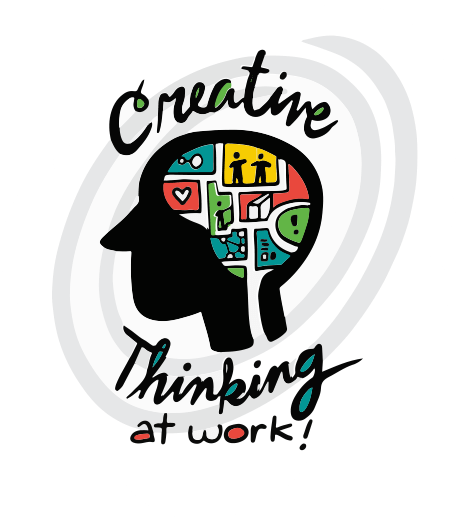Doodling during work might seen counterproductive, but it can actually be more helpful than you think. Or at least, that’s what Liisa Sorsa believes. Sorsa works for Toronto-based Thinklink Graphics—“You think it, we link it!”—a “graphic facilitation” company, where “professional doodlers” like Sorsa attend business meetings and draw images that correspond to the ongoing discussion. The result? Effective communication through “tapping into the creative side of your audience.” Sorsa brings her artistic expertise to meetings, conferences and keynotes—anywhere an absent-minded office worker might benefit from visual stimulation to keep their mind on the task at hand.
What does it mean to be a graphic facilitator?
A graphic facilitator is brought into a meeting or a workshop to listen, synthesize and draw out key themes that they hear in real-time. They create a visual story as the discussion unfolds, which helps participants with information retention, problem-solving, and access to key insights.
What’s an example of a situation where you might be called in?
A great example of this would be during a workshop or conference where the objective is to capture the key take-aways. The visuals are used for future decision-making sessions, and to further communicate messages to others.
What’s the benefit of looking at drawings during work?
Many people comment on how the visuals really help them feel like they’re more a part of the creation of the ideas being discussed. Often, we are capturing the key insights of a discussion, so their ideas come to life in the graphic. This helps them feel like their ideas are being heard.
What kind of feedback do you receive?
At first, people’s reactions are to the beauty of the artwork—then, they start to read and explore through the visual story and see that the content is there, and that they can really use these graphics for their work in a number of ways.
Are people surprised by how effective the process can be?
Yes! This happens often. I often say that graphic facilitators are the ones paying the most attention in the room; our role is to listen closely and make connections to what we are hearing, and allow these connections to create the visual. Many people are surprised by how impactful and important this can be to their meeting.
Are you starting to see an increased interest in what you do?
Yes, the field is exploding right now. I think social media has helped it grow—I’ve seen our Facebook page grow from hundreds of members to over 7000. With the exposure of our whiteboard animations on YouTube, we get an influx of people inquiring about [this kind of] work. What started out as a small grassroots movement has really expanded in the last few years.

